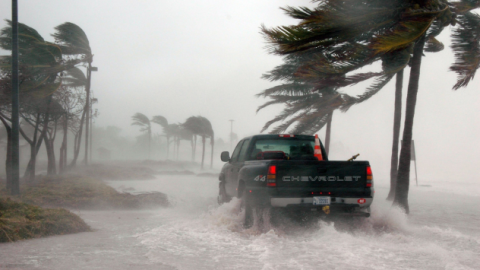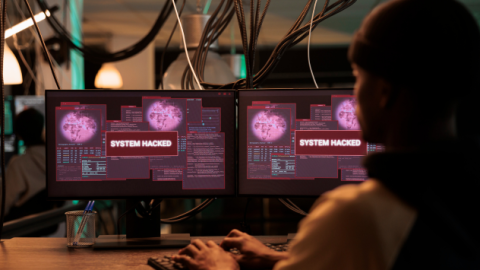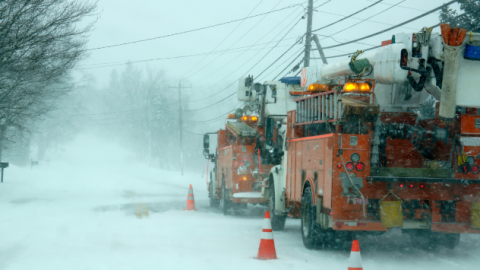Top 5 Scenarios for Business Continuity Testing

Business continuity testing is an essential part of this process, as it allows organizations to identify any gaps in their plans and make necessary adjustments. In this blog post, we will explore five popular business continuity testing scenarios: storms and other natural disasters, cyberattacks, workplace violence, pandemics, and winter weather.
Storms and Other Natural Disasters
Free hurricane tabletop exercise template
Storms and natural disasters can wreak havoc on businesses, causing significant disruptions and financial losses. From power outages and flooding to hurricanes, earthquakes, and wildfires, these events can pose a serious threat to organizations of all sizes. Having a robust business continuity plan in place is crucial for mitigating the impact of such disasters and ensuring the continuity of operations.
Key Considerations of a Natural Disaster Test Scenario
- Monitoring of real-time conditions
- Communication with employees, both in office and remote (will you need to evacuate?)
- Communication with customers (will you suspend operations?)
- Power outages
- Flooding
- Supply chain disruption
- Infrastructure and structural damage (what if your offices are rendered unaccessible?)
- Loss of data
- Disruption to essential services, including communications
Given the potential impact of these natural disasters, it's imperative for businesses to conduct thorough business continuity testing to identify vulnerabilities and ensure readiness. By simulating real-life scenarios, organizations can assess their response plans, identify gaps, and make necessary improvements to minimize disruptions and ensure a swift recovery.
Cyberattacks
Free cybersecurity tabletop exercise template
In today's digital age, businesses are increasingly vulnerable to cyberattacks. These attacks can come in many forms, from data breaches and denial-of-service attacks to malware infections, phishing attacks, and ransomware attacks. Regardless of the type of attack, the consequences for businesses can be devastating, leading to financial losses, reputational damage, and even legal liability.
Key Considerations of a Cyberattack Test Scenario
- Type of cyberattack (e.g., data breach, denial-of-service, malware, ransomware, phishing)
- Types of sensitive data that may be affected (customer, employee, financial, intellectual property)
- Where, how, and how often your data is backed up and how it will be recovered
- Whether your organization will pay a potential ransom
- Involvement of authorities
- Measures to prevent cyberattacks (firewalls, intrusion detection systems)
- Communications with employees, customers, vendors, and regulators
- Effects on client trust
To protect themselves from cyberattacks, businesses need to have a robust cybersecurity plan in place. This plan should include measures to prevent attacks and measures to respond to attacks. Businesses should also educate their employees about cybersecurity risks and how to protect themselves from attacks.
Active Shooter
Free active shooter tabletop exercise template
Workplace violence, including active shooter scenarios, is a serious issue that can have a devastating impact on businesses. It is important for businesses to have an active shooter response plan in place to mitigate the risk of violence and to ensure the safety of their employees, customers, and visitors.
Key Considerations of an Active Shooter Test Scenario
- Potential risks and sources of violence
- Communication with on-site employees and visitors
- Accounting for all on-site personnel
- Involvement of and communication with authorities
- Evacuation and safe room procedures
- Office security
- Communication with news media
- Post-event trauma counseling
- Return-to-office decisions
By including these steps in a business continuity testing scenario, businesses can help ensure the safety of their employees, customers, and visitors.
Pandemics
Free pandemic tabletop exercise template
Pandemics can disrupt businesses in a number of ways, including employee absenteeism, travel restrictions, government-imposed lockdowns and quarantines, and changes in consumer behavior. These disruptions can lead to lost revenue, increased costs, and even business closures.
Key Considerations of a Pandemic Test Scenario
- Monitoring of real-time global health updates
- Infection prevention measures
- Instructions for employees experiencing symptoms
- Accommodations for employees with sick family members
- Potential changes to employee absence and sick leave policies
- When to activate the crisis team
- When or if to have employees work from home
- Communication with employees, customers, and vendors
- Effects on supply chain, productivity, and ability to meet deadlines
- When to resume normal business operations
By taking these steps, businesses can help protect themselves from the impact of a pandemic and ensure the continuity of their operations.
Winter Weather
Free winter weather tabletop exercise template
Winter weather may not always fall under the category of natural disasters, but can have serious effects on a business's ability to operate and meet customer expectations. Winter weather can include snowstorms, ice storms, icy roads, poor visibility, frozen and burst pipes, and more.
Key Considerations of a Winter Weather Test Scenario
- Real-time monitoring of weather conditions
- Evaluation of how a winter weather event would affect normal operations
- Work-from-home procedures and potential excusing of non-essential employees
- Employees who may need to take care of family members
- Communications with employees, vendors, and customers
- Ability to maintain continuity in case of transportation disruptions and limitations
- Power and communication outages that may last several days
- Damage to physical infrastructure
- Support for employees who are affected by outages or damage
Winter weather isn't something to take lightly, even if your business is located in a more temperate area. By taking all the above points into consideration, businesses will be better prepared in case of severe winter weather.
Don't Delay - Test Your Plan Today
We recommend businesses test their business continuity plans at least every six months. We provide a range of testing options to make the process seamless for your organization.








